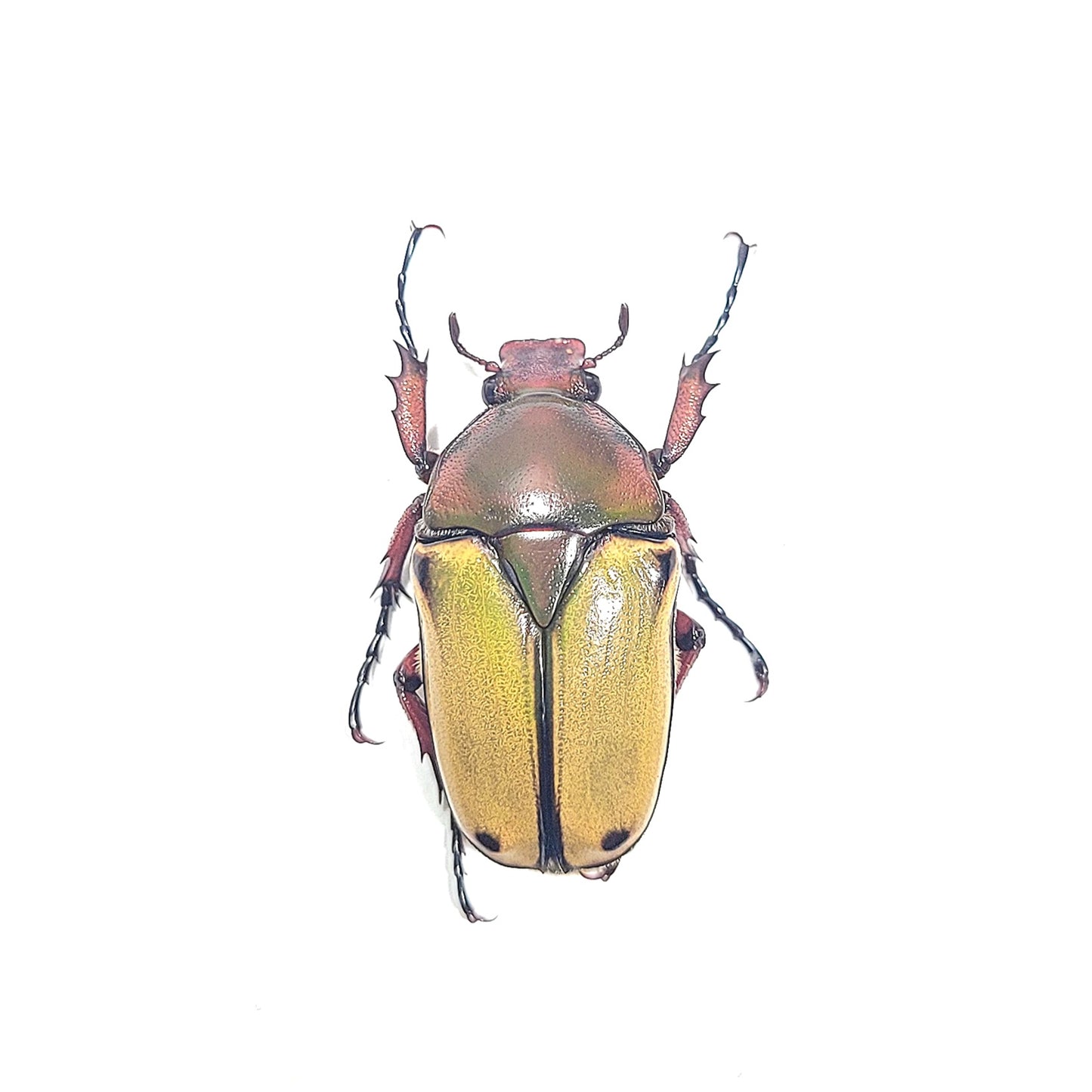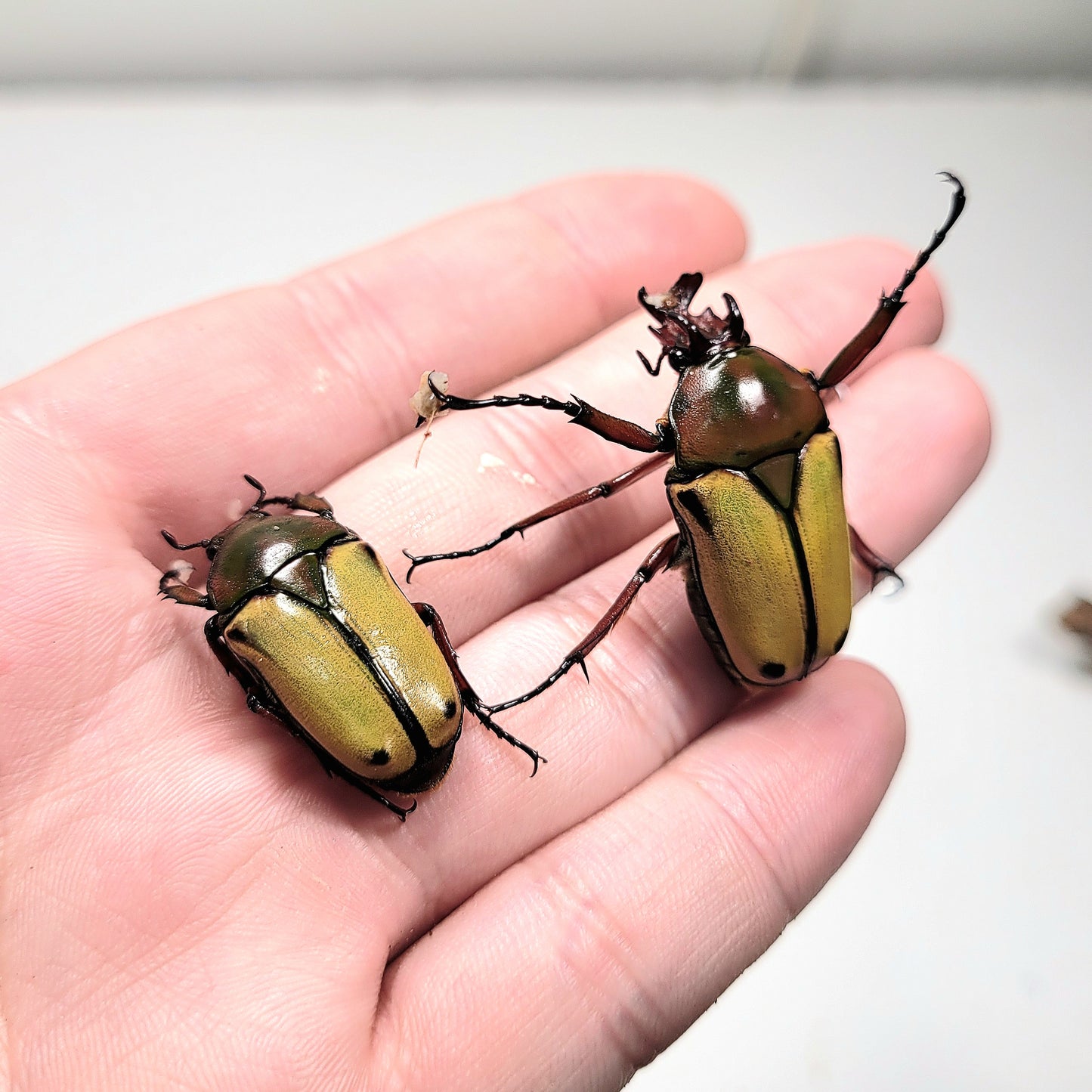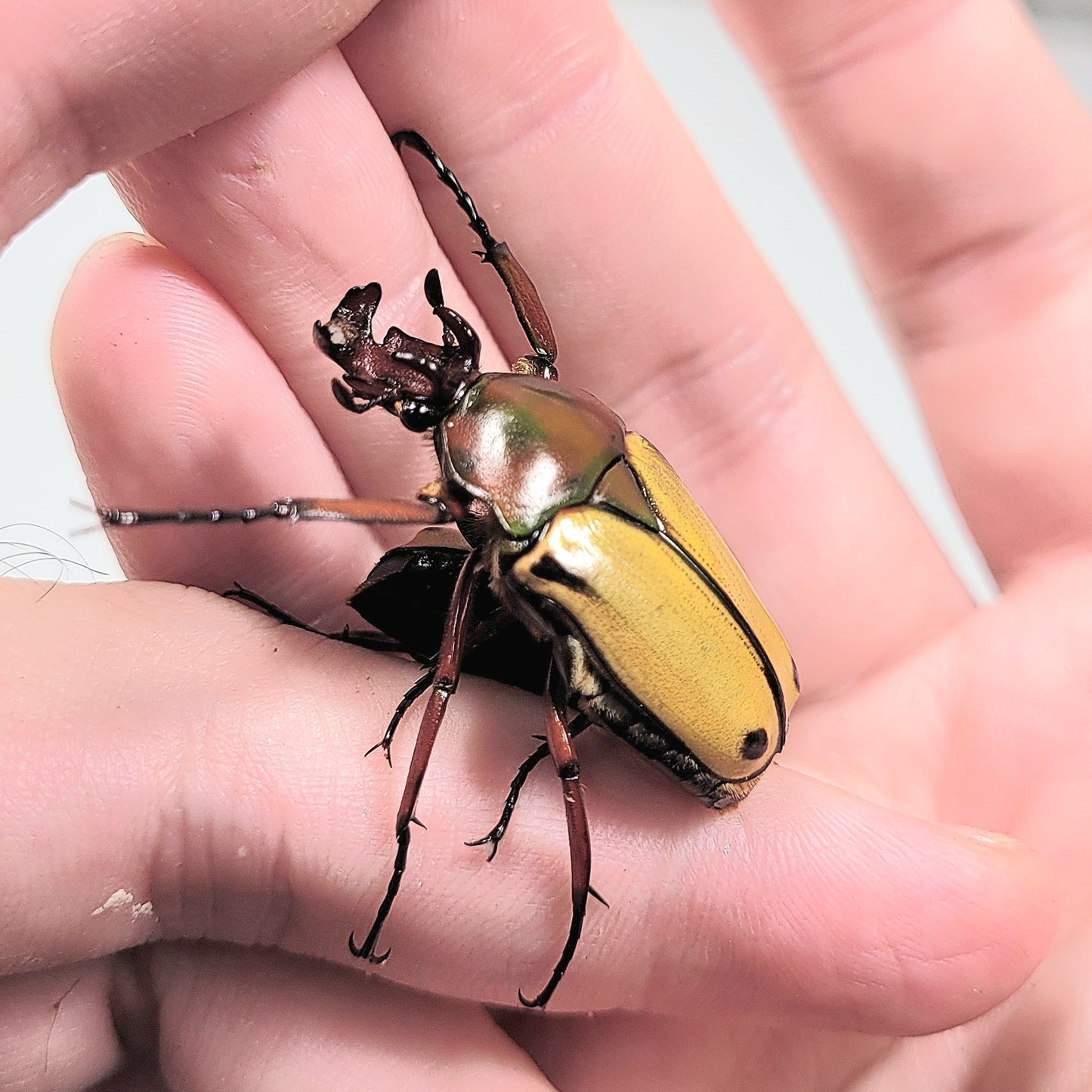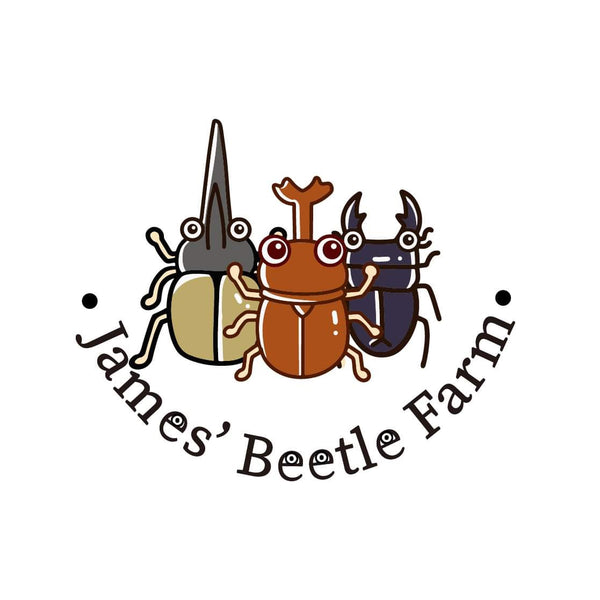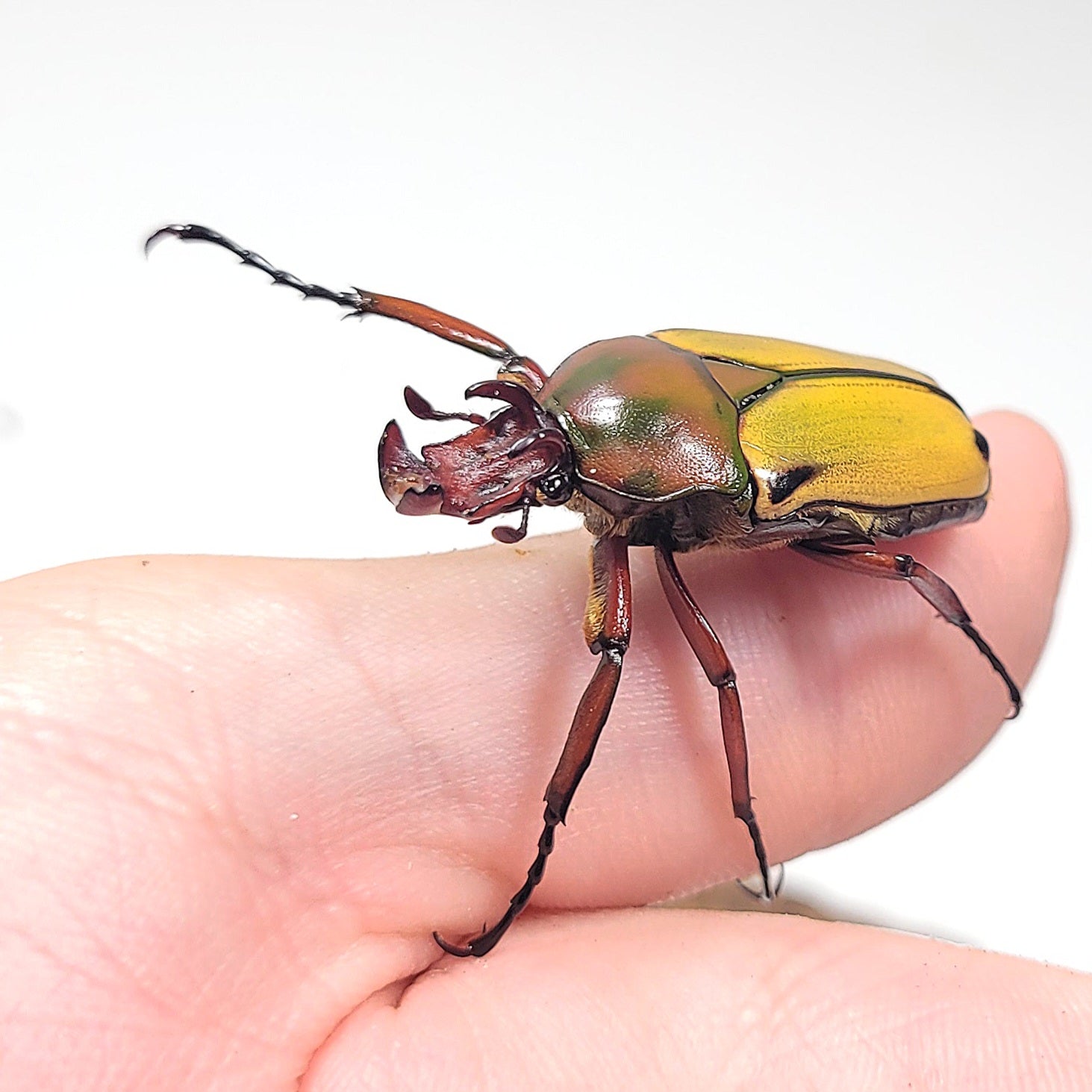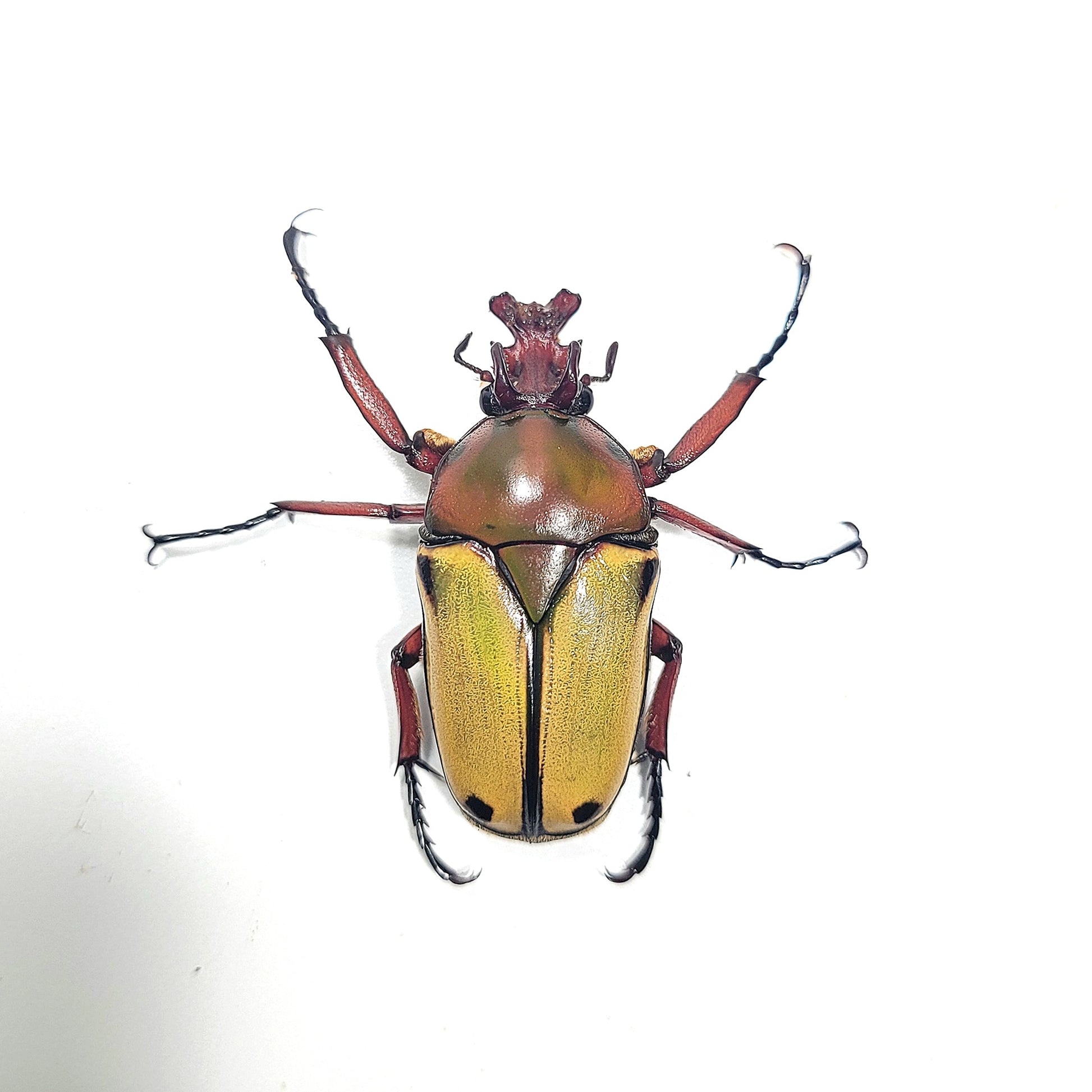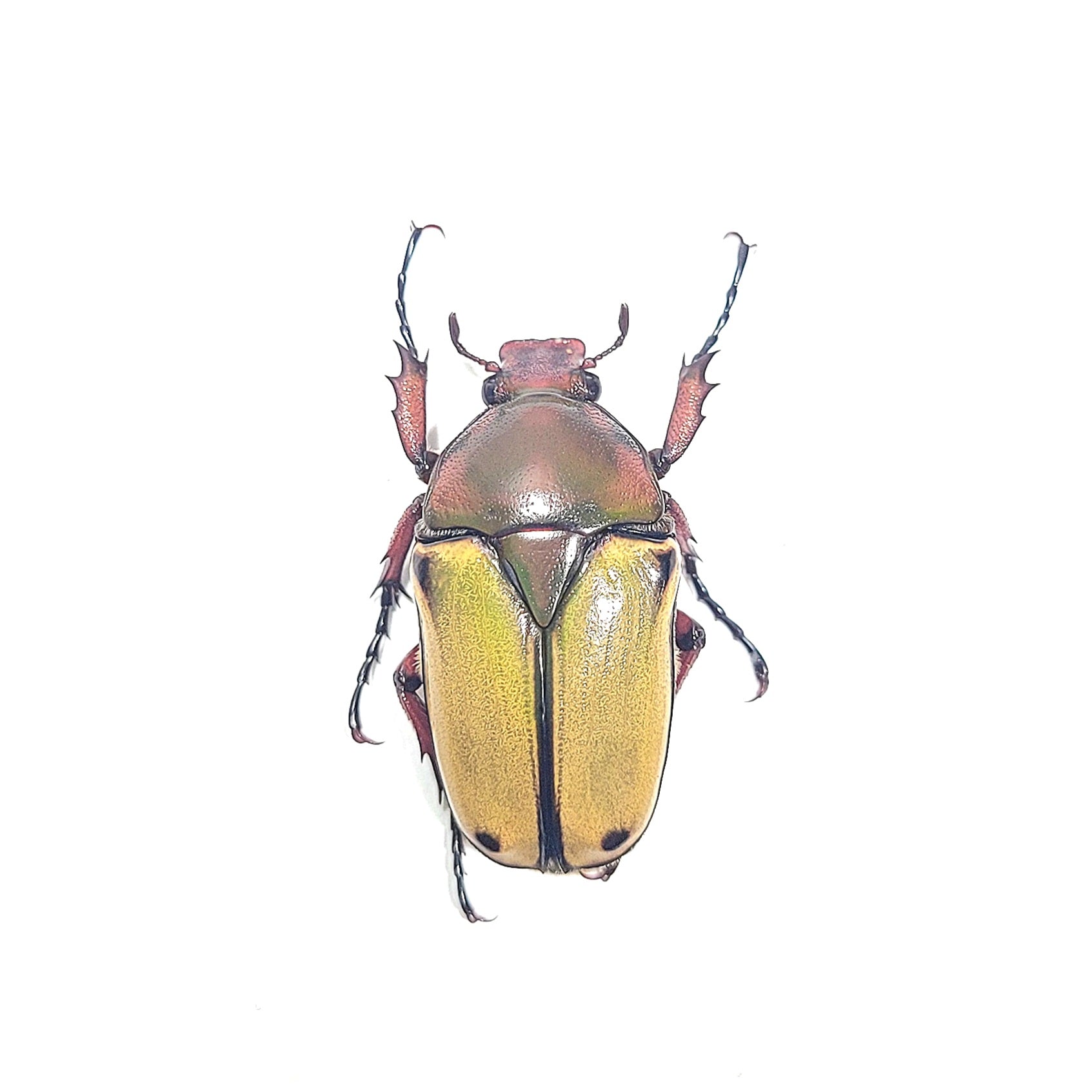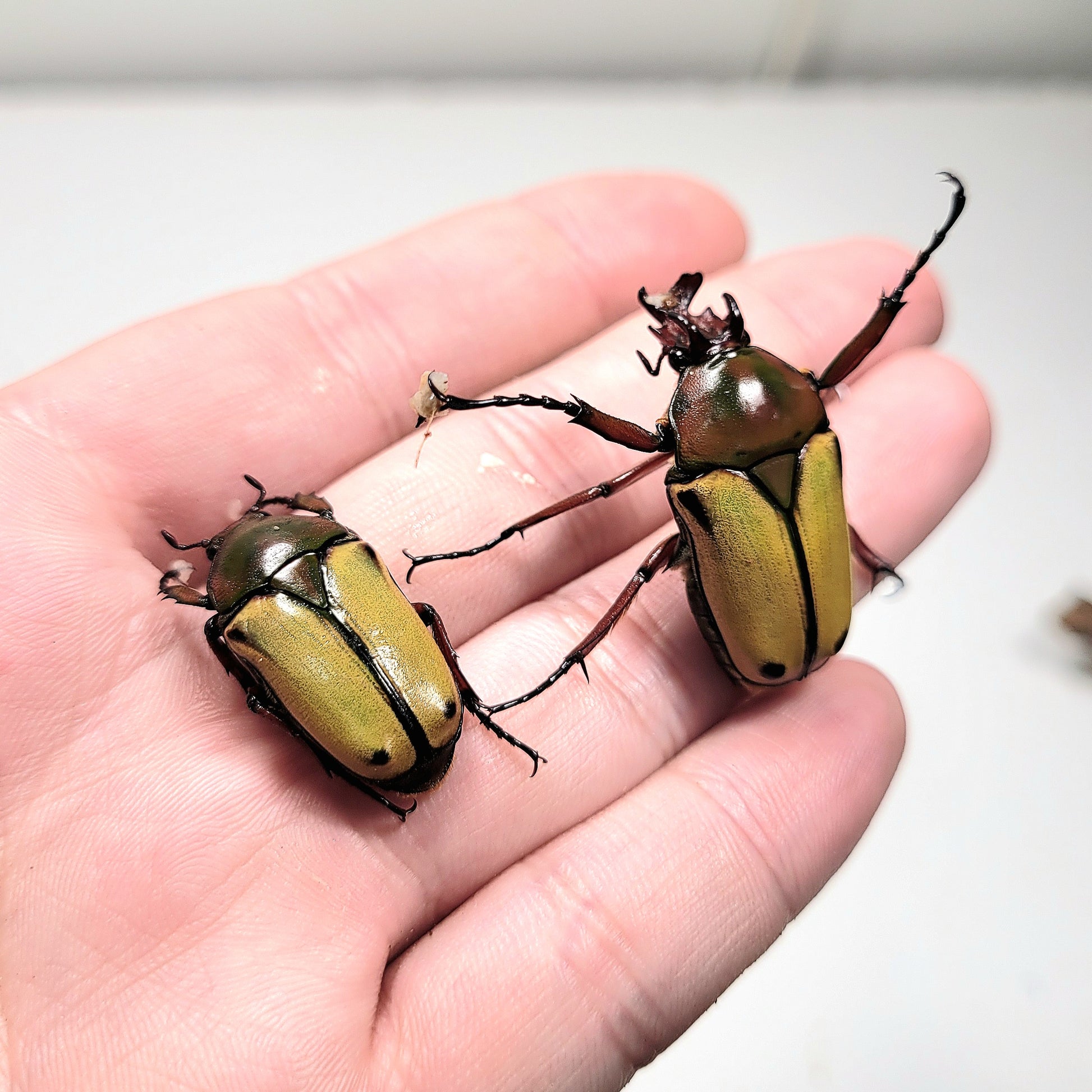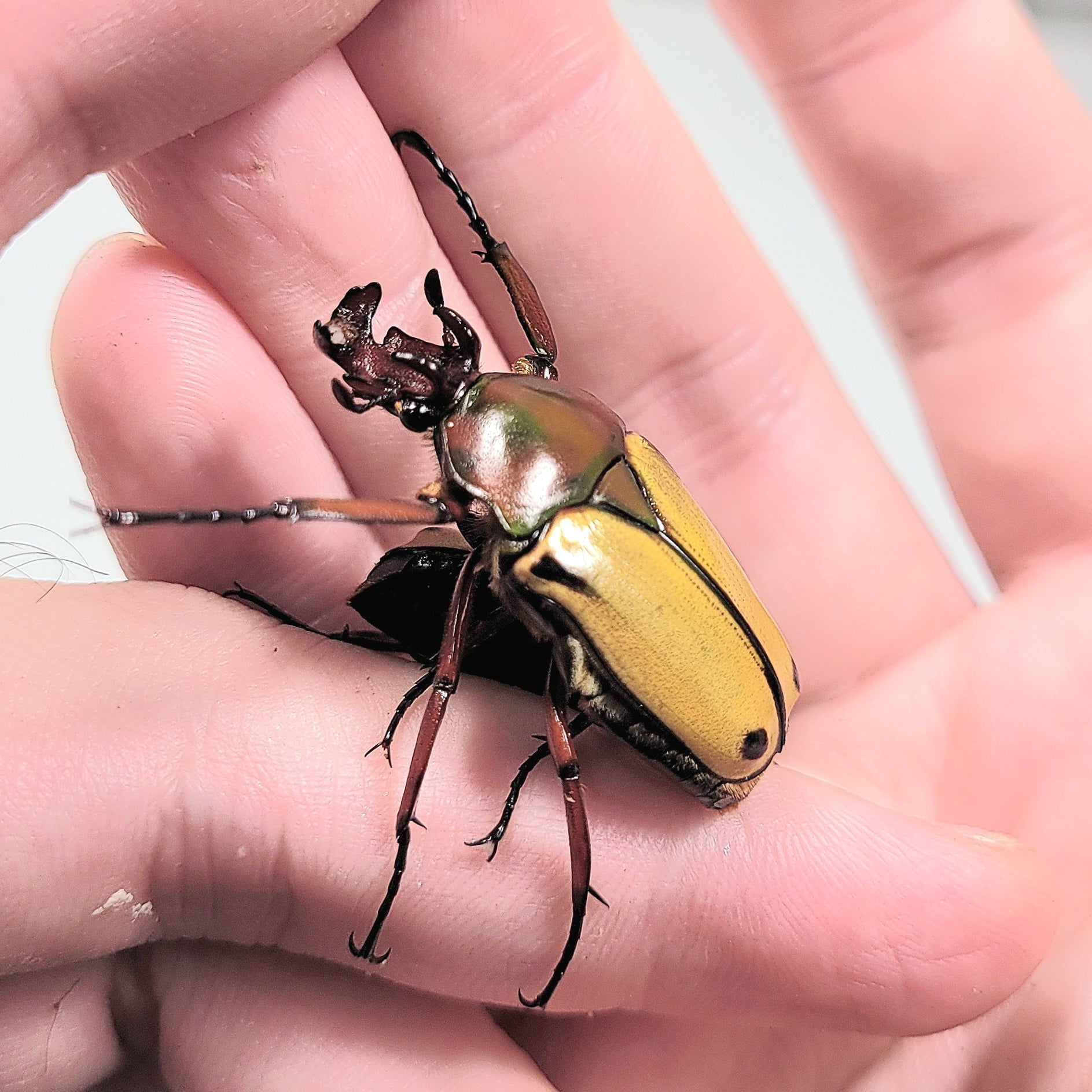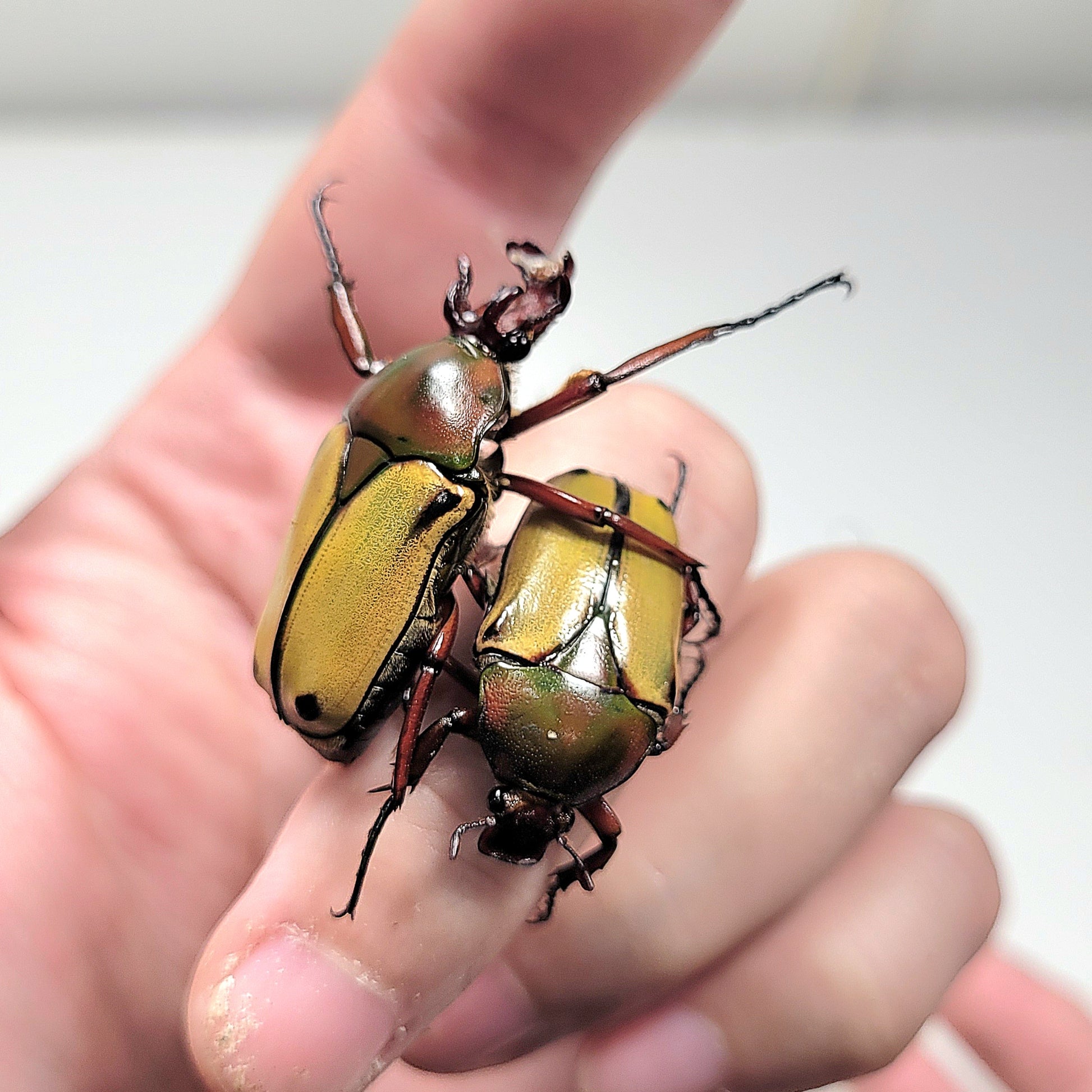James' Beetle Farm
Cornuta Flower Beetle (Cyprolais cornuta)
Cornuta Flower Beetle (Cyprolais cornuta)
Couldn't load pickup availability
Species Summary:
Adult lifespan: 3-5 months
Pupa period: 1-2 months.
Larva period: 4-6 months
Breeding difficulty: 2/10
Species Info:
Cyprolais cornuta, a member of the Cetoniidae family, is a striking flower beetle native to Kenya. This species is notable for its distinctive morphology, reproductive habits, and ecological role.
Cyprolais cornuta was first described by Heath in 1904. As a member of the genus Cyprolais, it shares characteristics with other species in the Cetoniinae subfamily. Adults measure approximately 25–35 mm in length and exhibit sexual dimorphism; males possess a prominent cephalic horn, while females lack this feature. The coloration of C. cornuta is typically a combination of yellow and brown hues, contributing to its vivid appearance.
In its natural habitat, C. cornuta thrives in environments rich in decaying organic matter, such as forests and savannas. The larvae feed on decomposing plant material, playing a crucial role in nutrient cycling within these ecosystems. Adults are often observed on flowers, where they feed on nectar and contribute to pollination.
C. cornuta undergoes complete metamorphosis, progressing through egg, larval, pupal, and adult stages. Females are prolific, and larvae can be reared on a leaf compost substrate. Notably, there is no cannibalism among larvae, even in crowded conditions, which makes them suitable for breeding in captivity. Adults typically live up to 6 months, with a life cycle ranging from 5 to 7 months.
Cyprolais cornuta is considered a suitable species for beginner beetle enthusiasts due to its ease of breeding and non-cannibalistic larvae. It serves as an excellent introduction to the care and breeding of scarab beetles. While not currently listed as threatened, its role in local ecosystems underscores the importance of preserving its natural habitats to maintain biodiversity.
Cyprolais cornuta exemplifies the intricate relationships between morphology, behavior, and ecological function in beetles. Its distinctive appearance and role in nutrient cycling highlight the importance of studying such species to understand and conserve the biodiversity of Kenya's ecosystems.
Share


